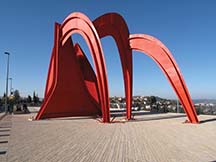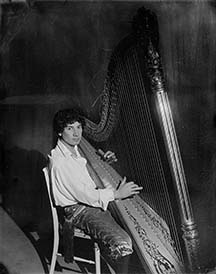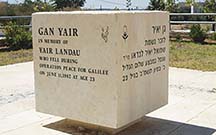
by: Janet Aslin, BFP Staff Writer
Judaism is rich with examples of giving and the act itself is taught from a very early age. In a blog entry entitled “What is the Jewish Tradition of Giving?” author Jacquelyn DeGroot defines the motivation for giving in this way: “To sustain the Jewish people, to enhance the Jewish life and to strengthen the Jewish community for today and the future.”
Maimonides, also known as the Rambam, was a Jewish scholar in the Middle Ages who developed eight levels of giving. The highest level is “to support a fellow Jew by endowing him with a gift or loan…in order to strengthen his hand so that he will not need to be dependent upon others.”
There are many examples of gifts that have been made to the citizens and State of Israel. I have chosen to highlight just four of these gifts that I believe serve to support and strengthen their recipients.
The synagogue at Hadassah University Hospital–Ein Kerem contains a treasure known the world over simply as the “Chagall Windows.” Twelve in all, each vibrantly colored stained glass window represents one of the twelve sons of the biblical patriarch Jacob.
Marc Chagall, the son of Orthodox Jewish parents, grew up in a Russian shtetl (Yiddish for small town with a large Jewish population). Although he spent most of his life in France and did not practice Judaism, he did not forget his origins and identified with Jewish history.
Barbara Goldstein, Hadassah’s deputy executive director and the ambassador for Large in Israel, told Israel21c the following story. In the late 1950s, while the hospital’s synagogue was still being planned, Hadassah representatives went to Paris to meet with Chagall to ask if he would design the synagogue’s stained-glass windows. The artist met their request with these words, “What took you so long? I’ve been waiting my whole life to serve the Jewish people,” Goldstein relayed.
Upon their completion Chagall said, “This is my modest gift to the Jewish people who have always dreamt of biblical love, friendship and of peace among all peoples. This is my gift to that people which lived here thousands of years ago among the other Semitic people.”
“All the time I was working, I felt my mother and father looking over my shoulder; and behind them were Jews, millions of other vanished Jews—of yesterday and a thousand years ago,” Chagall explained.
In my humble opinion, no trip to Jerusalem is complete without a visit to the Chagall Windows at Hadassah University Hospital–Ein Kerem.

While the Chagall Windows draw visitors with their sheer beauty and vibrancy, not everyone is a fan of the massive Alexander Calder sculpture that sits on Mount Herzl near the road leading to Yad Vashem (Israel’s Holocaust museum).
Calder was not Jewish but he was a Zionist. In 1975, he visited Israel as a demonstration of support after yet another UN resolution condemning the Jewish state had been passed. Jerusalem’s mayor at that time, Teddy Kollek, asked the world-renowned sculptor if he would donate a piece to the city. He agreed. The site was chosen and the work begun.
Overlooking the Jerusalem Forest, the bright red sculpture is constructed of bolted steel that was fabricated according to the artist’s design in the Loire Valley. Its fire-engine red arches against the blue sky and green of the forest are eye-catching and very striking. Sadly, Calder died before his work was installed, making the Homage to Jerusalem his last sculpture.

Harpo Marx, one of the five Marx Brothers, was part of a highly successful American comedy family. The family’s career spanned nearly 50 years, beginning in Vaudeville and ending with motion pictures. Each of the brothers had a stage persona and you can probably guess that Harpo played the harp. The silent character in their routine, Harpo taught himself to play the instrument, developing his own unique style. Upon his death in 1964, this son of Jewish immigrants bequeathed his harp to the State of Israel.
There are differing accounts of how the harp came to Israel but what is not disputed is the fact that it did come. Several sources verified that Israeli students at the Jerusalem Academy of Music and Dance are currently using Harpo’s famous instrument. And it is possible that a second harp belonging to the comedian also found its way to Israel and now resides at an unnamed Israeli orchestra.

I discovered this relatively unknown gift on my way home one evening. As I walked up the hill toward the Central Bus Station in Jerusalem, I noticed a tiny park and decided it was time to take a rest. In the center of the park was a piece of Jerusalem stone perhaps no more than 3 feet high by 2 feet wide (0.9 m. x 0.6 m.) with the following words: “Gan Yair—In memory of Yair Landau who fell during Operation Peace for Galilee on June 11, 1982 at age 23.”
Donated by his family and friends, this park has helped keep the memory of a very special young man alive for more than 40 years. Yair’s parents made aliyah (immigrated to Israel) when he was 10 years old and he grew up in Jerusalem. Yair loved to study Torah (Gen.–Deut.) and he loved Israel. A corporal in an elite unit of the Israel Defense Forces, Yair was killed in the defense of his country. There is no greater gift than this.
Photo Credit: Click on photo to see photo credit
Photo License: Homage to Jerusalem
Photo License: Harpo Marx Harp
Photo License: Yair's Garden
All logos and trademarks in this site are property of their respective owner. All other materials are property of Bridges for Peace. Copyright © 2025.
Website Site Design by J-Town Internet Services Ltd. - Based in Jerusalem and Serving the World.